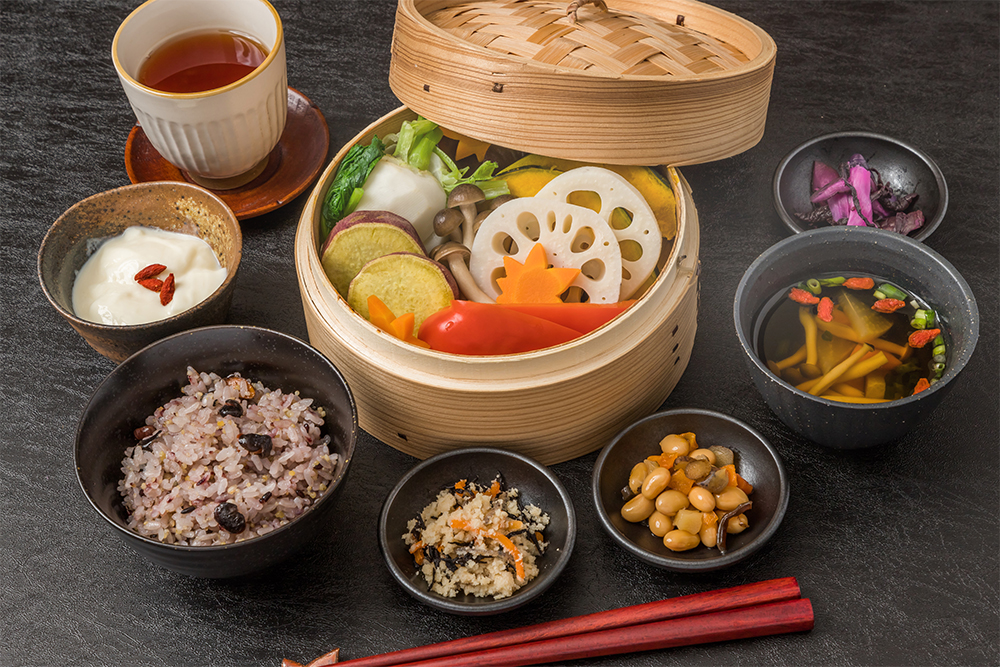Shojin cuisine is the vegetarian cuisine originally derived from the dietary restrictions of Buddhist monks. In Buddhism, Shojin cuisine is food cooked in such a way that does not harm the life of other beings. Shojin cuisine can also be found in China, Korean and Taiwan. When it comes to Shojin cuisine, the most important aspect is to avoid using any ingredients of animal origin.
With the appearance of Zen in Japan, after the Kamakura period (around 1000 years ago), Shojin cuisine spread. Since only plant-based ingredients are used, flavor and cooking methods had to be thought through. Striving for good taste and texture, has led to the development of a variety of tastes in Japanese cuisine. As a result, cooking methods also evolved and became diverse. In Zen Buddhism, every activity is practiced with the idea of “Shojin” in mind. Shojin, besides symbolizing the zest in one’s quest for enlightenment, means concentration, diligence and devotion and it is the beginning of the name of the Buddhist vegetarian meal we are speaking about: Shojin cuisine. Due to the meanings attached, dedication towards cooking was a significant part of training in Zen Buddhism.
The above-mentioned “Kaiseki cuisine” is also based on Shojin food preparation. This kind of food can often be found at restaurants and it can satisfy the needs of vegetarian and vegan people.
Some shrines and temples in Japan have sleeping facilities and as part of their visit, worshippers are allowed to stay over in a bedroom called “shukubo.” In that case, as part of the Buddhist practice, Shojin vegan meal can be enjoyed. However, this is something reserved for worshippers.




